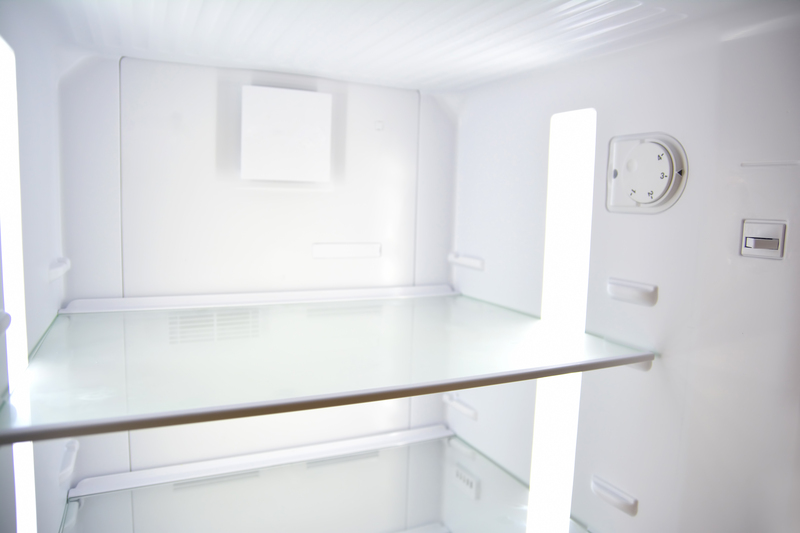Smart Packing Tips for a Stress-Free Move
Relocating can be overwhelming, but with smart packing strategies, you can turn a stressful moving process into a smooth, organized transition. Whether you're moving across the city or planning a long-distance relocation, packing wisely is the foundation for a successful move. In this comprehensive guide, discover effective and stress-free moving hacks that will help you pack smarter, not harder.

Why Smart Packing Is Essential for a Stress-Free Move
Packing efficiently is not just about stuffing belongings into boxes. It's a strategic task that, when done right, saves time, energy, and money. Using smart packing techniques can:
- Minimize the risk of damaged items
- Streamline the unpacking process
- Reduce moving costs by using fewer boxes and resources
- Prevent feelings of overwhelm and chaos
- Ensure an organized move from start to finish
Our detailed moving tips will help you master the art of smart packing for a stress-free move, setting the stage for a happy new beginning.
Plan Ahead for a Smoother Move
1. Create a Moving Checklist
A detailed moving checklist is your roadmap to stress-free packing. Write down every task, from sorting and decluttering to booking movers and updating your address. Checking off items as you go keeps you motivated and organized.
2. Gather High-Quality Packing Supplies
Invest in durable moving boxes, bubble wrap, packing paper, strong packing tape, and permanent markers. Avoid overfilling weak or mismatched boxes to prevent breakage. Specialty boxes for dishes, wardrobes, and electronics make packing safer and easier, reducing potential stress.
Declutter Before You Pack
3. Sort and Purge
Don't move what you don't need. Go through each room and create piles: keep, donate, sell, or toss. Get rid of expired foods, worn-out clothes, outdated electronics, and unnecessary duplicates. Fewer belongings mean fewer boxes and less work on moving day.
4. Hold a Garage Sale or Donate
Turn unwanted items into cash or give them a second life by donating to local charities. Hosting a garage sale is not just eco-friendly, it's financially smart and can significantly reduce your load, making your move less stressful and more efficient.
Organize and Prioritize Packing
5. Pack by Room, Not by Category
Packing room by room streamlines the process and makes unpacking simpler. Start with rooms and items you use the least, such as guest bedrooms, attic, or storage spaces, and gradually work toward everyday essentials.
6. Label Your Boxes Clearly
- Mark boxes with both the room name and a brief description ("Kitchen - Pots & Pans").
- Use color-coded tape or stickers for each room for instant recognition.
- Add FRAGILE labels as needed to alert movers to delicate contents.
Smart labeling prevents lost items and confusion, ensuring you know exactly where your essentials are when you arrive in your new home.
7. Make an Inventory List
Create a detailed inventory of the contents in each box. This can be a simple notebook, a spreadsheet, or a moving app. Having a master list will help you track your belongings, making both the move and unpacking less stressful.
Best Packing Techniques for Fragile and Valuable Items
8. Use the Right Packing Materials
Protect your valuables with bubble wrap, packing paper, or soft linens and towels. For electronics, use their original packaging if available.
- Dishware and Glasses: Wrap individually and use dish barrels or divided boxes.
- Electronics: Label cables and use anti-static wrap for sensitive components.
- Artwork and Mirrors: Tape an 'X' on glass to minimize shattering, wrap in bubble wrap, and pack upright.
9. Avoid Overpacking Boxes
While it's tempting to fill each box completely, overstuffed boxes can break and are more difficult to carry. Heavier items should go in smaller boxes; lighter items can fill larger ones. Aim for a balance of weight and volume for each box.
Optimize Space with Smart Packing Hacks
10. Pack Clothes Efficiently
- Leave clothes on hangers and use wardrobe boxes, or cover bundles with garbage bags for quick transfer.
- Roll clothes instead of folding to save space and minimize wrinkles.
- Stuff socks and underwear into shoes or corners of boxes for optimized use of space.
11. Utilize Luggage and Duffle Bags
Don't waste suitcases and duffle bags--they're perfect for packing books, shoes, or heavy items you want to keep organized and easily accessible during your move.
Essential Items: Pack a First Night Box
Prepare a "first night essentials box" that contains everything you'll need right away in your new home:
- Toiletries (soap, toothbrush, toilet paper)
- Fresh clothes and pajamas
- Basic kitchen utensils, single pan, and snacks
- Important documents and valuables
- Chargers and electronics
- Bedding and towels
This approach guarantees a stress-free first night without frustrating searches for necessities.
Smart Packing Tips for Saving Time and Money
12. Use What You Have
Wrap fragile items in towels, bedding, or clothing instead of buying extra bubble wrap or packing paper. Reusable shopping bags are ideal for organizing awkward-shaped items or transporting last-minute essentials.
13. Schedule Packing Sessions
Packing a whole house in one day is overwhelming. Create a timeline and pack a little each day in the weeks leading up to your move. Spreading out the workload helps you stay focused and reduces moving-related stress.
14. Enlist Help
Moving is rarely a solo job. Ask friends or family for help, or consider hiring professional movers who offer packing services. A team effort not only saves time but also makes the experience more enjoyable and less daunting.
Unpacking Tips: For a Smart, Stress-Free Move-In
15. Clean Before You Unpack
If possible, clean your new home, especially closets, cabinets, and kitchen areas before boxes arrive. A clean slate makes unpacking more pleasant and efficient.
16. Unpack Essentials First
Start with your "first night box" and daily-use items. Set up your bed, bathroom, and kitchen basics to quickly feel settled.
17. Space Out Unpacking
Don't rush! Tackle one room at a time, starting with spaces you'll use most. Labeling and inventorying during packing pays off now--find what you need quickly to reduce move-in stress.
Bonus: Smart Packing Tips for Special Items
Moving Plants
- Water plants a few days beforehand to prevent overwatering.
- Pack small pots in open boxes and cushion with paper.
- For long-distance moves, check regulations about transporting plants across state lines.
Transporting Pets Safely
- Keep pet essentials handy--food, water, litter box, and comfort items.
- Transport pets in secured carriers, and make frequent stops for bathroom breaks during long moves.
- Prepare a quiet space for pets in your new home to minimize stress.
Protecting Important Documents
Keep passports, birth certificates, medical records, and financial documents in a labeled, waterproof envelope. Carry this envelope personally rather than stowing it in the moving truck.

Smart Packing Mistakes to Avoid
- Procrastinating and leaving everything for the last minute.
- Skipping labels or making vague notes on boxes.
- Mixing items from different rooms in the same box.
- Making boxes too heavy to lift safely (keep box weight under 50lbs!).
- Forgetting to protect breakables properly.
- Failing to pack a personal essentials box.
Mindful preparation and proactive organization will help you sidestep these common moving blunders.
Conclusion: Stress-Free Moving Starts with Smart Packing
A well-thought-out approach to packing doesn't just lighten your physical load--it eases your mental one, too. With a practical plan, quality supplies, and a keen sense of organization, you can pack smart for a smooth, stress-free move. Remember to declutter, label everything clearly, and keep your essential items easily accessible. With these smart packing tips, you'll be ready to settle into your new home with confidence and peace of mind.
For more stress-free moving tips, efficient packing strategies, and relocation guides, bookmark this article and refer back to it when planning your next move!



